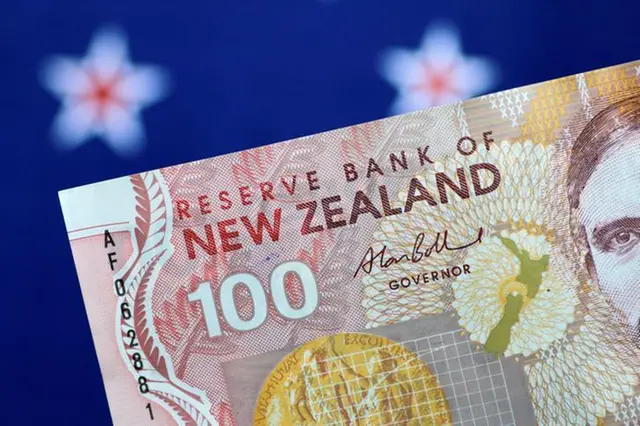Gold Prices Rise as Safe-Haven Demand Grows and Trade War Fears Bite: Key Drivers Behind XAU/USD Trends
Prices of gold keep rising as demand for safe haven increases in the wake of rising trade tensions and geopolitical tensions. US tariffs on Mexican, Canadian, and Chinese imports have taken a toll on markets, leading investors to turn to the precious metal as a safe haven. The US also suspended military aid to Ukraine, further boosting gold’s attractiveness. But there are challenges to non-yielding assets such as gold by higher US Treasury yields and a stronger US Dollar. Market players await further guidance from key US economic indicators such as the ISM Services PMI and ADP Employment Change. Technically, gold is still in an uptrend channel, maintaining above important psychological support at $2,900, with scope for more on the upside towards its all-time peak of $2,956. KEY LOOKOUTS • Raising US tariffs against Mexico, Canada, and China add to market volatility, fueling safe-haven buying and underpinning gold prices amid economic uncertainty. • Increasing US Treasury yields are exerting bear pressure on non-yielding assets such as gold, possibly capping further gains despite firm safe-haven demand. • The US suspension of military aid to Ukraine stokes geopolitical tensions, making gold more attractive as investors seek refuge from global uncertainty. • Future US ISM Services PMI and ADP Employment Change reports will hold key to gauging economic growth, potentially impacting gold’s short-term price action. Prices of gold continue to be at the center as investors try to navigate a contradictory blend of trade tensions, growing US Treasury yields, and geopolitics. Implementation of US tariffs on Mexican, Canadian, and Chinese imports has increased market uncertainty, fueling safe-haven demand for gold. In the meantime, the US government’s move to suspend military assistance to Ukraine has added to geopolitical tensions, contributing to gold’s bullishness. Yet increasing Treasury yields are a threat to non-yielding assets such as gold, and this may limit gains. Traders now look forward to some major US economic data releases, including the ISM Services PMI and ADP Employment Change, which may further guide XAU/USD in the near term. Gold prices jump as growing trade tensions and geopolitical uncertainties trigger safe-haven demand. Increasing US Treasury yields, however, pose a hurdle to further growth. Market guidance comes from forthcoming key US economic data. • Gold prices jump as investors search for refuge due to increasing trade tensions and geopolitical risks. • Fresh US tariffs on Mexico, Canada, and China spur market volatility, contributing to gold’s rising momentum. • US suspension of military aid to Ukraine contributes to worldwide uncertainty, making gold more attractive. • Higher yields squeeze non-yielding assets such as gold, constraining further price appreciation. • A stronger US Dollar suppresses gold, producing mixed market sentiment. • Market participants monitor the ISM Services PMI and ADP Employment Change reports closely for information about economic growth. • Gold maintains major support at $2,900, with the resistance at its all-time high of $2,956. Gold prices continue to gain steam as investors move towards safe-haven assets following rising global uncertainties. The latest imposition of US tariffs on Mexico, Canada, and China has increased market uncertainty, and with it, there are fears of a possible trade war. This has led investors to find safe haven in gold, which is conventionally considered a hedge against economic and geopolitical uncertainty. Furthermore, the US government’s move to suspend military assistance to Ukraine has further added to global tensions, supporting gold’s demand as a safe-haven asset during uncertainty. XAU/USD Daily Price Chart Chart Source: TradingView Aside from trade and geopolitical issues, market participants are also paying close attention to important US economic indicators. Indices like the ISM Services PMI and ADP Employment Change are likely to offer insights into the resilience of the US economy, impacting investor attitudes. Although worries about weakening economic growth continue, the effect of tariffs on international trade and consumer expenditure is a significant area of concern. Against this backdrop, gold remains in the limelight as a safe-haven asset, a sign of investors’ conservative approach to an increasingly complex financial environment. TECHNICAL ANALYSIS Gold price (XAU/USD) is still in an uptrend channel, signaling a long-term bullish trend. The metal is still trading above the important psychological support level of $2,900, which coincides with the nine-day Exponential Moving Average (EMA). The Relative Strength Index (RSI) remains above 50, supporting bullish momentum. Should the price hold above this level, it might target primary resistance at $2,956, its all-time high. But a breakdown below immediate support can soften short-term momentum, potentially resulting in a pullback to lower trendline support. In general, technical indicators indicate that the bullish bias is still intact unless a serious breakdown happens. FORECAST Gold prices should continue to enjoy a bullish picture in the near term as demand for safe haven continues to rule investor sentiment. The rising tensions in trade, especially the US tariffs on Mexico, Canada, and China, may further push gold’s attraction. Moreover, geopolitical risks such as the US suspending aid to Ukraine are contributing to risk globally, for which gold seems to be the attractive asset. If economic concerns continue to deepen and market fears intensify, gold may receive an upward push towards its all-time high of $2,956. Solid buying interest at critical support levels and continuous momentum above the $2,900 level might consolidate the bullish trend. To the downside, increasing US Treasury yields and a strengthening US Dollar might press on gold prices, capping further advances. Increased bond yields raise the cost of holding non-yielding assets such as gold, which can lead to profit-taking. Also, if the next US economic releases, including the ISM Services PMI and ADP Employment Change, show the economy is resilient, gold may come under pressure. A break below the $2,900 psychological support level can lead to further losses, with the next significant support at $2,850. But until investor sentiment takes a dramatic turn, any bearish movement could still be capped.












